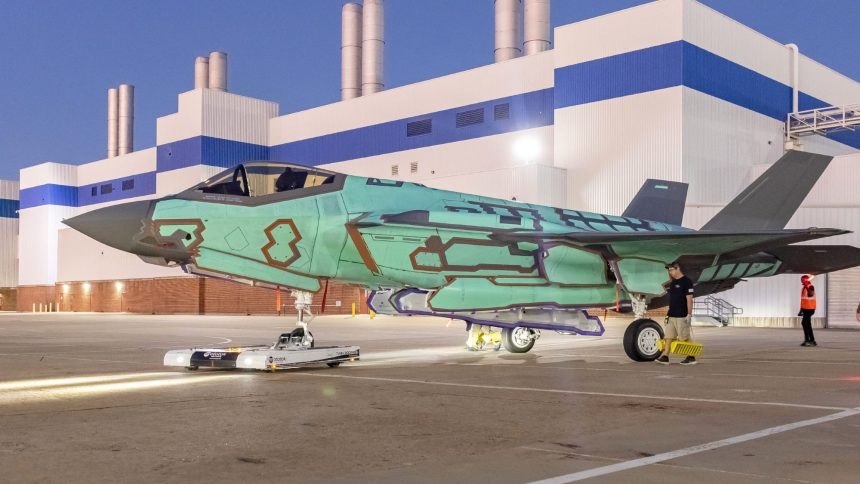A new era for Finnish air power has officially begun, as Finland’s first F-35A Lightning II stealth fighter proudly rolled out from the production line. This momentous occasion, while occurring thousands of miles from Finnish soil, marks a profound strategic shift for the Nordic nation and significantly reshapes the balance of air power in the crucial Arctic and Baltic Sea regions. The F-35A is not merely a replacement for Finland’s aging F/A-18 Hornets; it represents a generational leap in capability, ensuring Finland’s skies are guarded by one of the most advanced combat aircraft in the world.
Finland’s decision to acquire the F-35A was the culmination of a rigorous and extensive evaluation process under its HX fighter program, where the F-35 beat out several formidable competitors. This choice was driven by a clear understanding of the evolving security landscape, particularly in the wake of renewed geopolitical tensions in Europe. The F-35’s unmatched stealth, sensor fusion, and networked capabilities were identified as critical for operating effectively against advanced threats and maintaining air superiority in a highly contested environment.
The F-35A is often described as a “flying computer” due to its unparalleled integration of sensors, communication systems, and data processing capabilities. For Finland, this translates into several key advantages:
- Unrivaled Situational Awareness: The F-35’s advanced sensor suite allows pilots to see threats further and more clearly than ever before, creating a comprehensive picture of the battlespace. This is crucial for early detection and response in the vast and often challenging Arctic environment.
- Stealth Capability: The F-35’s low observable design significantly reduces its radar cross-section, making it extremely difficult for adversary air defense systems and aircraft to detect and track. This enhances survivability and allows Finnish pilots to operate with greater impunity.
- Networked Warfare: The F-35 is designed to be a node in a larger network, sharing critical data with other F-35s, ground-based air defense, and allied forces. This “force multiplier” effect greatly enhances overall combat effectiveness.
- Multi-Role Versatility: While primarily an air superiority fighter, the F-35A also excels in ground attack and intelligence, surveillance, and reconnaissance (ISR) missions, providing Finland with a highly flexible platform.
The rollout of the first F-35A is the initial step in a carefully planned integration process. Finnish pilots and maintenance crews will undergo intensive training in the United States before the aircraft are eventually delivered to Finland. This training is crucial not only for mastering the F-35’s complex systems but also for developing the logistical and operational doctrines necessary to effectively deploy and maintain the fleet in Finland’s unique climate and terrain.
Furthermore, this acquisition has significant geopolitical implications. Finland’s long-standing policy of military non-alignment recently shifted with its historic decision to join NATO. The F-35 acquisition, initiated before NATO membership, perfectly complements this new alignment. It enhances interoperability with other NATO nations that also operate the F-35 (a growing list including the U.S., UK, Norway, Denmark, Belgium, Poland, and more), strengthening the alliance’s collective defense posture, particularly in the High North.
For Finland, a nation known for its strong defense capabilities and emphasis on national resilience, the F-35 represents a commitment to maintaining a credible deterrent in a dynamic security environment. The aircraft’s ability to operate from dispersed locations and in challenging weather conditions makes it an ideal fit for Finland’s unique geographical and climatic realities.
The F-35 program is also expected to bring economic benefits, with industrial participation opportunities for Finnish defense companies, integrating them into the global F-35 supply chain. This further strengthens Finland’s domestic defense industry and technological base.
In conclusion, the rollout of Finland’s first F-35A Lightning II is far more than a ceremonial event; it’s a strategic declaration. It marks a decisive step in modernizing Finland’s air force, securing its national defense, and significantly bolstering the collective security of the Nordic and Arctic regions. As these stealth fighters begin to arrive, they will serve as powerful guardians of the Arctic skies, ensuring Finland remains a formidable force in an increasingly complex world.




